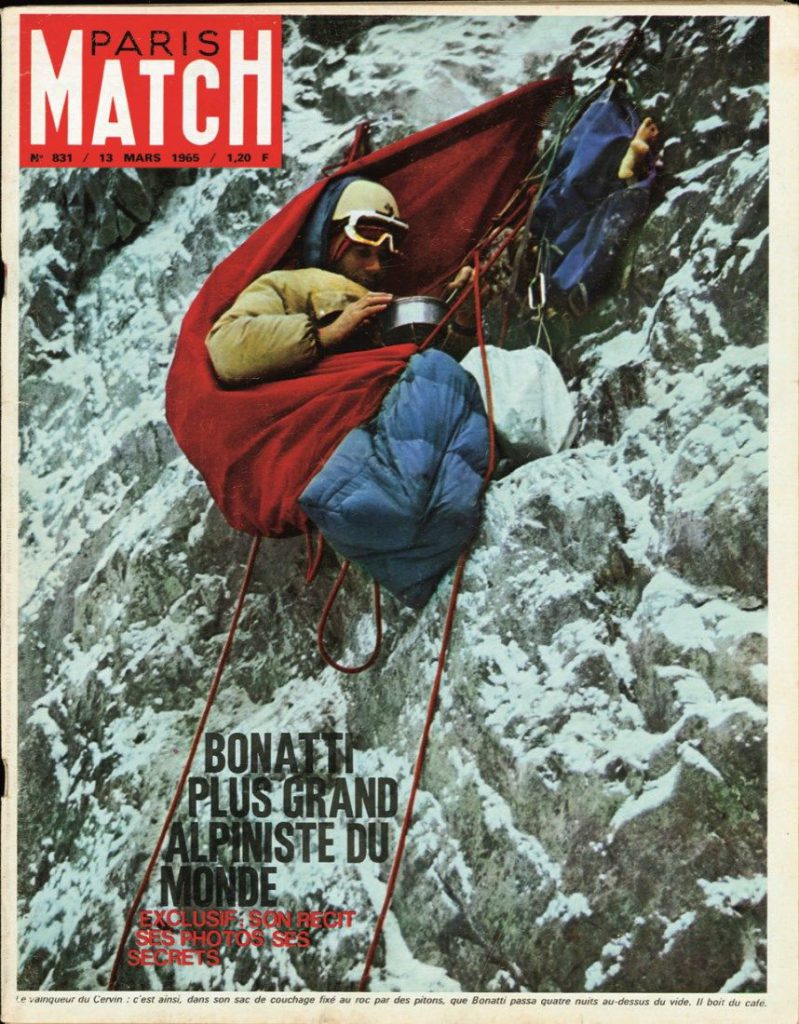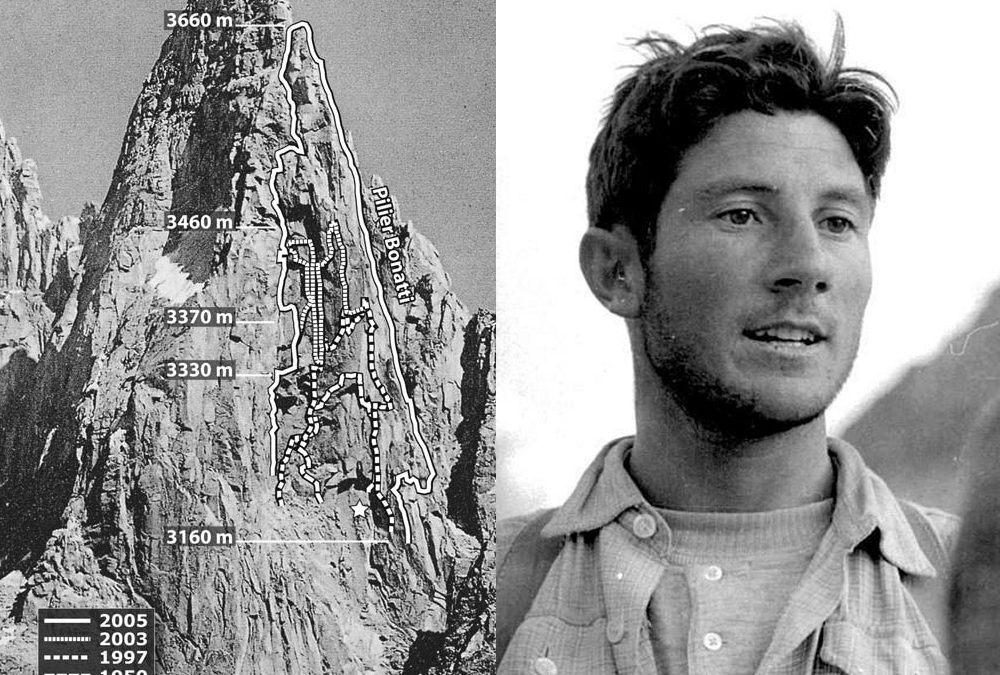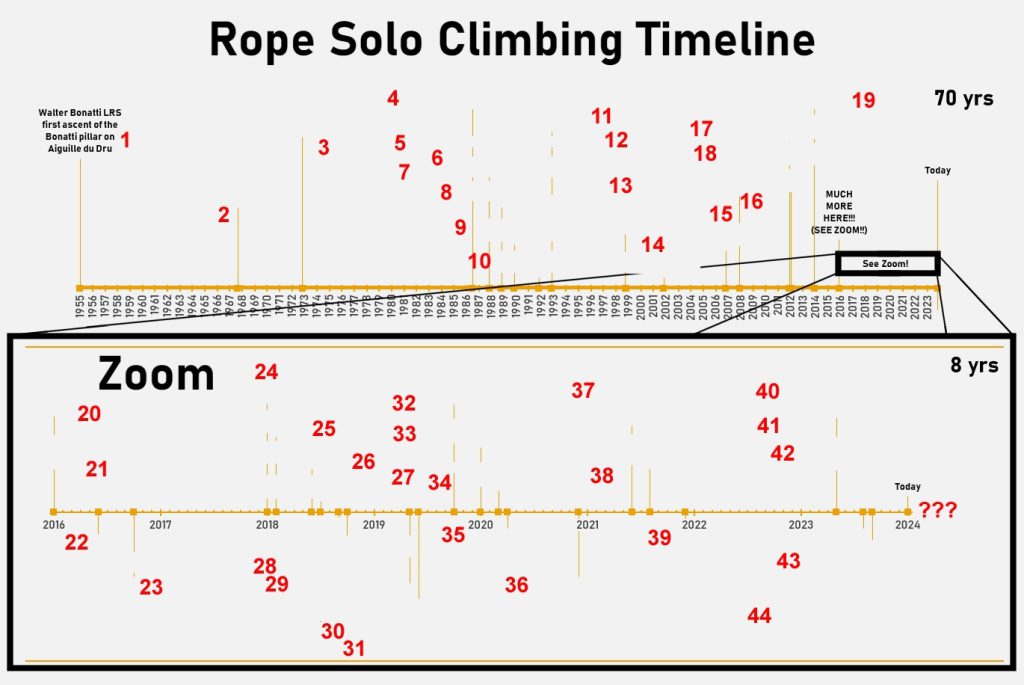At the time, it was completely groundbreaking. Rope solo was kind of unthinkable as the climbing gear was so rudimentary. So a first ascent like this one blew everyone’s mind.
Walter Bonatti probably had rigid early Nylon ropes to do the climb.
He did his first ascent over 6 days.
A great video in French is available with this private link below. Let me know if you can get a funny auto-translation from YouTube!
Bonatti invented what he called later the “system z”. While no exact description of his system z remains, he described:
“In actual fact the previous morning among the strange maneuvers to assure my own safety which I improvised as the occasion demanded I had found one in which the sack had a very important part to play ad from then onward I did not advance a foot without making use of this system, which I shall call ‘System Z.'”
“Then I drove in a piton, attached the sack to it and, after adopting my “System Z” for self-preservation, I tried and tried again to master an overhang on which I should have continued in free climbing.”
“Then I came to the end of the rope; to stop was impossible, so without hesitation I again made use of the “System Z” to secure myself, tripling the amount of rope at my disposal and continued my way upward. Ten feet farther on, the rope got caught and stopped me suddenly. I was panting like a dying man so great was my effort and my desperation….”
I found this idea on Super Topo (http://www.supertopo.com/climbers-forum/289600/Bonatis-Syztem-Z) by Marcussi: “I know this is a very late reply :-), and probably you guys have already worked out what Bonatti’s selfbelay Z system was, but here’s my 2 cents, taken from what I’ve read and other climbers’ guesses: lower end of rope attached to belay pitons, runs to harness and then goes back to belay system, to go back up to shoulder and finally to rucksack where the rest of the rope lays. In case of fall the sheer resistance posed by the “Z” path of the rope, and the additional action on the shouldered portion of rope ensures some safety. Obviously this system means that a 60 mt rope only allows for 20 mts range, after which you’ll have to redo it if you have a good protection.”
I can see how I would leave the belay with the rope fixed to the bottom belay anchor, a loop clipped to my harness, the rope going back to the bottom belay anchor. I could clip the first 2 ends to protection as I went, and controled the “belay end” as I went creating a z that would enable to climb 20 m with 60 m of rope. And the rope could initially be stacked in my pack that would wait for me at the bottom belay anchor until I finished the small “pitch”. How Bonatti controled his rope is still unclear to me. Was it using knots? I read that belay plates only appeared in the late 60s…
Note that at that time, I believe the ropes were probably more like 40m long. I base my gear assessment on this great article: “How Climbing Gear Has Evolved Over the Past 50 Years” by Jim Erickson found here: https://www.climbing.com/gear/cllimbing-gear-history-erickson/.

This is the first of 44 Rope Solo Landmark Events that I will tell you about until about end of July 2024. These articles will be only available to my paying Patreons (any tier) or online course buyers.
To get an online course and receive the private story links by email, you can buy an online course here: https://blissclimbing.com/en/online-courses/
To receive the articles by email through Patreon, buy any tier level on https://www.patreon.com/blissclimbing
Here is the public version of my Rope Solo timeline for now. You will get an update with each new story as I unveil them 🙂 ENJOY!


